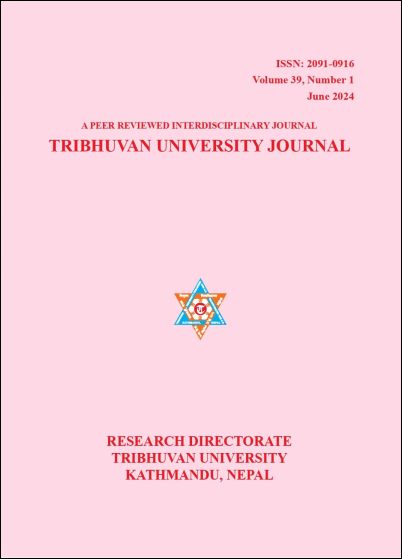Phytochemical Screening and Antioxidant Potential of Extracts of Selected Medicinal Plants from Nepal
DOI:
https://doi.org/10.3126/tuj.v39i1.66663Keywords:
RSA, medicinal plants, phytochemical screening, TPC, TFCAbstract
Aqueous and metholic extracts of twelve different species of antidiabetic plants belonging to different plant groups (liverworts, ferns and flowering plants) were screened for the presence of seven different groups of secondary metabolites. The same extracts were also subjected to quantification of total phenolic and flavonoid content. Antioxidant potential of those extracts was also compared using DPPH radical scavenging activity. The qualitative phytochemical assessment showed presence of more phytochemicals in methanol extracts than aqueous extracts. Furthermore, the extracts of none of the species possessed all the phytochemicals tested. The methanolic extracts also contained quantitatively more metabolites like total phenolics and total flavonoids than aqueous extracts. The highest value of total phenolic content (TPC) and total flavonoid content (TFC) were found respectively in methanol extracts of Rhus succedanea (162.71 ± 0.23 mg GAE/g) and Asterella wallichiana (70.5 ± 0.58 mg QE/g). The lowest value of TPC (17.86 ± 0.3 mg GAE/g) and TFC (2.63 ± 0.34 mg QE/g) was found in aqueous extracts of Hedychium coronarium. DPPH radical scavenging activity revealed high antioxidant potential in species with relatively high TPC values like O. wallichii, Rhus chinensis, R. succedanea, Rubus niveus and Smilax ferox.
Downloads
Downloads
Published
How to Cite
Issue
Section
License

This work is licensed under a Creative Commons Attribution-NonCommercial 4.0 International License.
This license enables reusers to distribute, remix, adapt, and build upon the material in any medium or format for noncommercial purposes only, and only so long as attribution is given to the creator.
© Center for Research, Tribhuvan University

